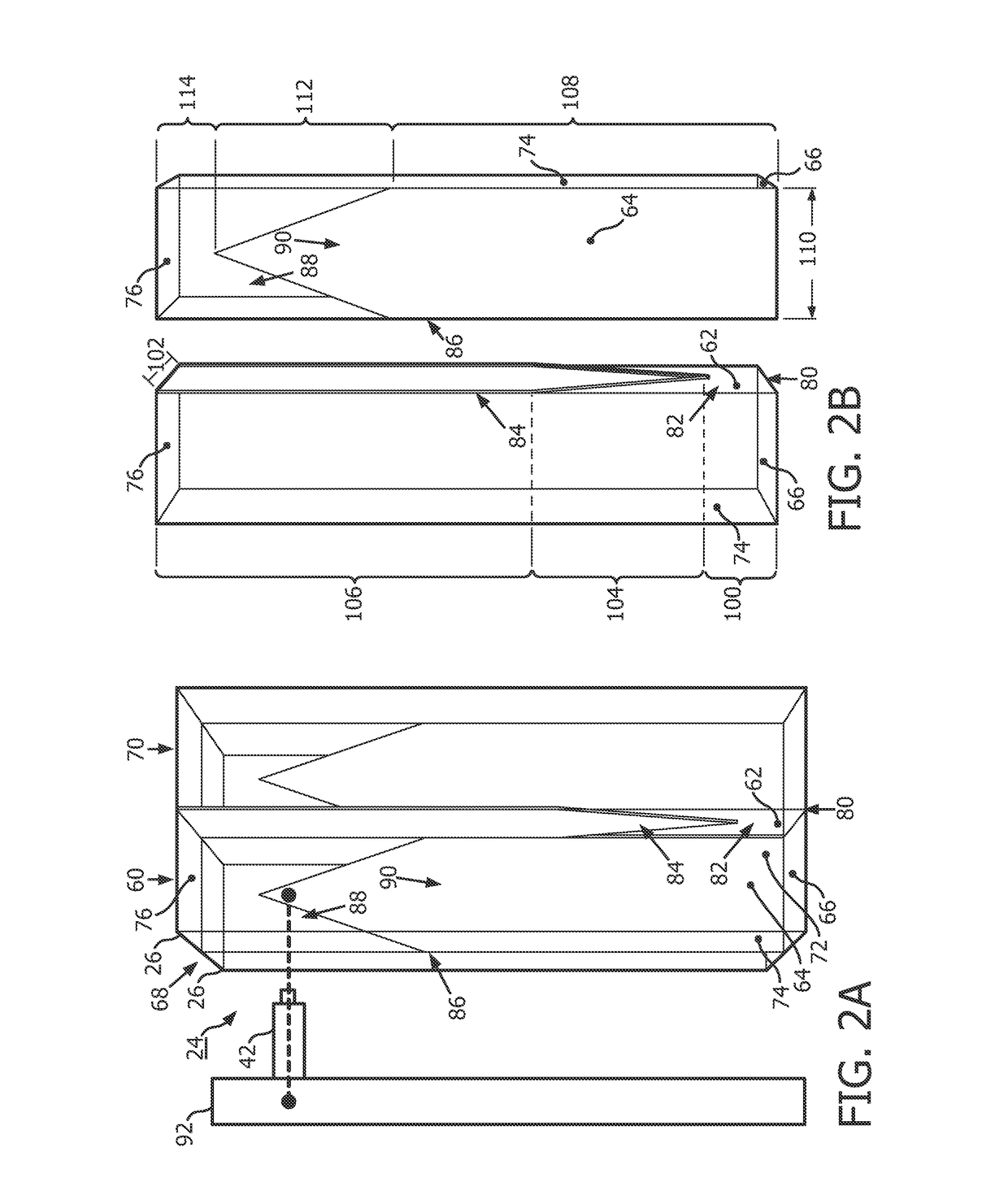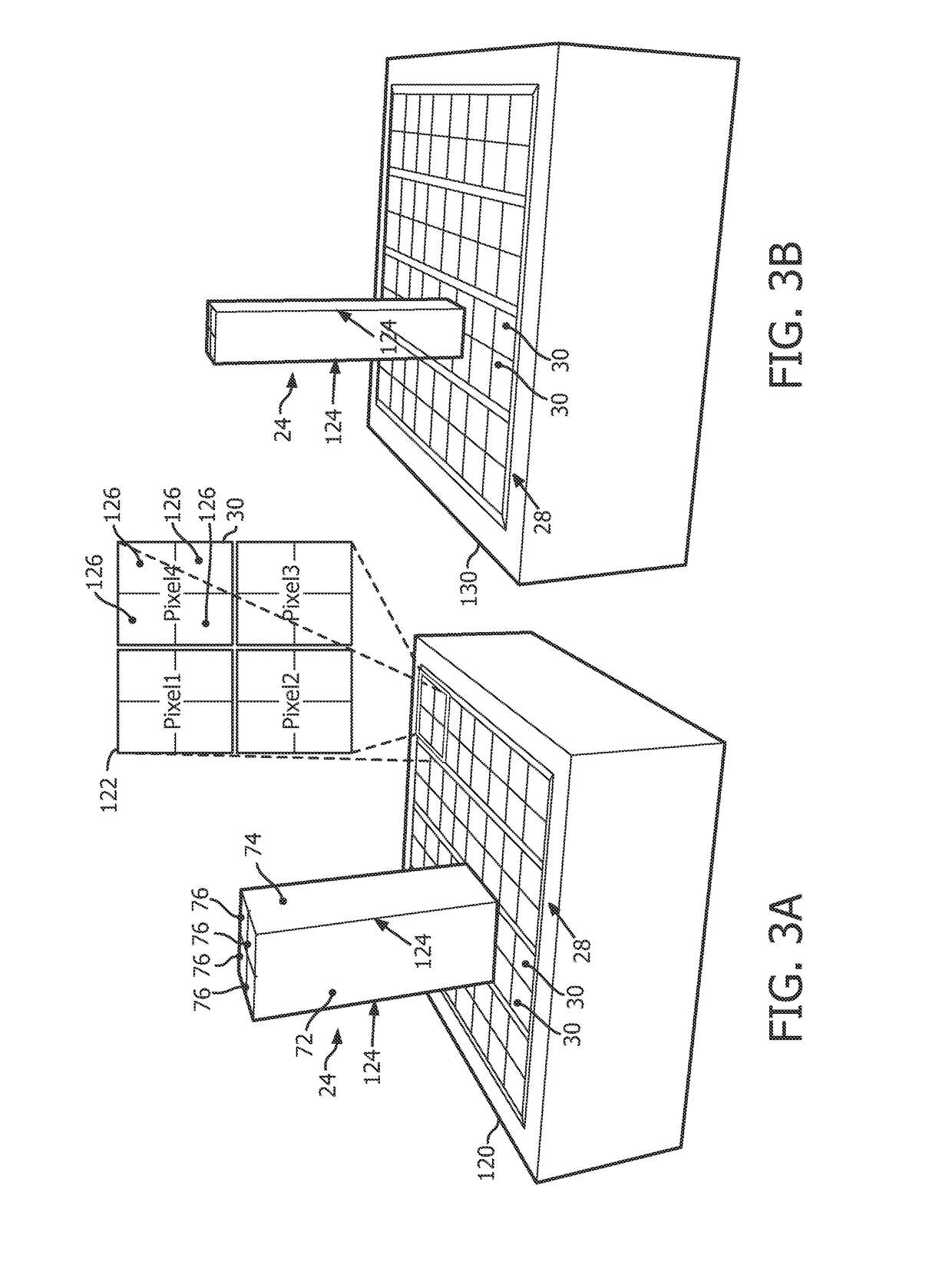Pet detector scintillator arrangement with light sharing and depth of interaction estimation
a scintillator and detector technology, applied in the field of nuclear medicine medical imaging, can solve the problems of affecting system throughput, difficult, if not impossible, side measurement, etc., and achieve the effects of simple computation of doi, excellent timing resolution, and excellent spatial resolution
- Summary
- Abstract
- Description
- Claims
- Application Information
AI Technical Summary
Benefits of technology
Problems solved by technology
Method used
Image
Examples
Embodiment Construction
[0027]With reference to FIG. 1, an embodiment of a photon detector scintillator arrangement with light sharing and depth of interaction estimation system 10 is diagrammatically illustrated. The system 10 includes a positron emission tomography scanner or imaging device 12, which includes one or more detector rings 14 circumscribing an imaging region 16 shown in perspective with the detector rings 14 exposed. The imaging region 16 receives a subject supported on a subject support 18 and the subject, injected with a radiopharmaceutical, emits gamma photons received by the detector rings 14.
[0028]Each detector ring 14 includes detector tiles 20 arranged circumferentially around the imaging region 16. Each detector tile 20 includes a two-dimensional arrangement of dies 22 shown in an exploded center facing view. Each die 22 includes a scintillator array 24 of four substantially identical scintillator crystal bars 26, such as LYSO (lutetium-yttrium oxy-orthosilicate), Lutetium Oxy-Orthos...
PUM
 Login to View More
Login to View More Abstract
Description
Claims
Application Information
 Login to View More
Login to View More - R&D
- Intellectual Property
- Life Sciences
- Materials
- Tech Scout
- Unparalleled Data Quality
- Higher Quality Content
- 60% Fewer Hallucinations
Browse by: Latest US Patents, China's latest patents, Technical Efficacy Thesaurus, Application Domain, Technology Topic, Popular Technical Reports.
© 2025 PatSnap. All rights reserved.Legal|Privacy policy|Modern Slavery Act Transparency Statement|Sitemap|About US| Contact US: help@patsnap.com



